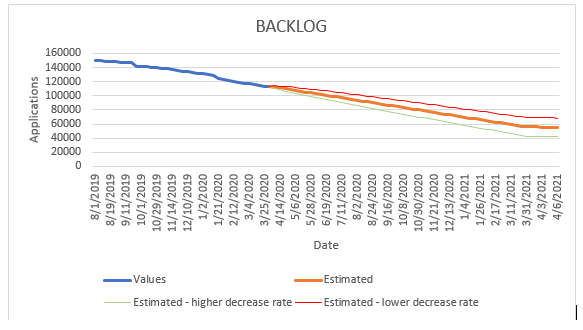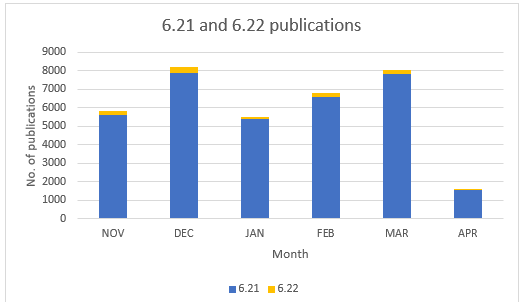In the second half of 2019, the Brazilian Patent Office (BRPTO) started an ambitious plan to eliminate the backlog of unexamined patent applications. The aim of the project is to reduce 80% of the current backlog within two years. Up until March 2020, before the world COVID-19 crisis, the numbers were really impressive. The challenge now is to keep this progress going, while maintaining the examiners working 100% remotely.
The news in this regard are good. A number of the BRPTO examiners were already used to working remotely and now all of them are doing so, in order to impact as little as possible the backlog elimination plan.
According to the numbers provided by the Brazilian Patent Office, when the project started (August 2019), the patent applications that were in the condition to be examined amounted to almost 150,000. 2020 started with this figure reduced to less than 132,000 and on the last day of March around 113,500 applications were awaiting examination. In other words, there was a reduction of almost 25% in about 6 months.
All these data are available at the BRPTO’s website. As a result, it is possible to a plot a graphic in an attempt to estimate what will happen over the next 12 months.
As can be seen above, the decrease in the number of non-examined patent applications has been nearly linear. The estimate for the next year was made considering that the decrease would follow the same pattern. Moreover, two additional hypothetical situations were provided: one considering a decrease at a faster rate and another based on a lower rate of decrease.
In view of these estimations, if the decrease keeps following the current pattern, it is possible that the ambitious goal of reducing 80% of the backlog within two years can be achieved. More specifically, using the equations of each graphic, the backlog will amount to less than 29,984 non-examined applications (20% of the initial amount) on:
- June 14, 2021 (ahead of expectation), considering a faster rate of decrease;
- September 15, 2021 (almost within expectation), considering that the pattern of decrease remains the same; and
- January 07, 2022 (later than expectation), considering the worst-case scenario of a lower rate of decrease.
In any case, regardless of the speed that applications are being examined, it is clear that the elimination of the BRPTO’s backlog, which was deemed to be impossible, is really happening.
Another observation that can be extracted from the figures provided by the BRPTO is that the backlog is not evenly distributed between technical fields. The 20 patent divisions were grouped into five larger groups, namely: chemical engineering, mechanical engineering, electrical engineering, instruments and others. Based on the chart below, the majority of the backlog composed of applications belonging to the chemical engineering group (35%):
In terms of numbers, 39,950 patent applications waiting to be examined belong to the chemical engineering area. Although it has not been explained how these groups were formed, it is very plausible to assume that the pharmaceutical divisions are located in the chemistry group. The two pharmaceutical divisions are in the top 3 divisions with the longest examination periods. This, together with the fact that most of the BRPTO’s patent divisions fall under the chemical engineering group should contribute to the first place ranking in the number of applications to be examined.
It is reasonable to expect that some divisions will eliminate the backlog before others. However, the BRPTO did not inform whether some examiners would be reallocated to the correlated areas to assist them in eliminating the backlog. By doing so, the BRPTO would be able to decrease the backlog at a higher rate. It is the first time that such a promising situation concerning the famous Brazilian backlog is achieved.
According to a recent interview given by the BRPTO’s administrative director, the remote work due to the social isolation caused by the COVID-19 outbreak in Brazil should not be an issue to the project, since such remote work measures were already implemented previously for some examiners and the others are already well-adapted to the current situation. The number of office actions issued in the last 6 months related to the backlog project (publication codes 6.21 and 6.22) corroborates his statement, as follows.
Upon analyzing the Official Bulletins published between November 2019 and the first week of April 2020, it can be seen that the remote work did not affect the pattern of publications so far. Actually, March 2020 had the second highest number of publications, while the first week of April had a number of publications that is above average.
In view of the above data, it is possible to say that the BRPTO and local agents are committed to the backlog project and it appears that the COVID-19 outbreak will not jeopardize these efforts. Thus, it is likely that in the next years the BRPTO will be able to issue a final decision on patent applications much faster, benefitting innovative companies and society as a whole.







